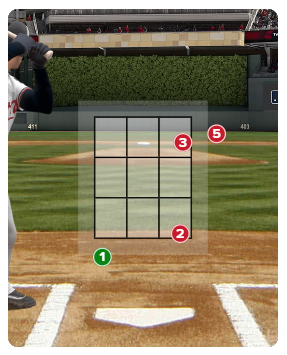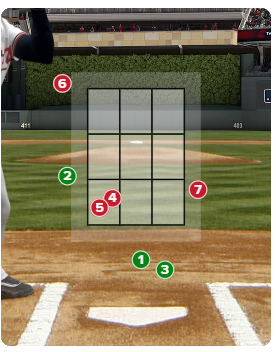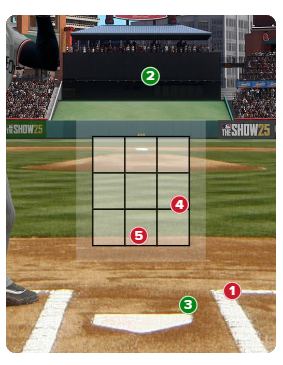Although it’s been used in the minor leagues since 2023, MLB’s implementation of its automatic balls and strikes system (ABS) in spring training this year caught the attention of fans and players. Despite the positive results and high approval from players and fans, the league office has indicated it will wait another season before introducing it to MLB.
Fortunately, plenty of data is available to see how ABS might benefit hitters if MLB had already implemented the system this season. MLB Gameday has been tracking pitch location for years, and they’ve included an outline of the ABS strike zone in their live gameday feeds for 2025.
While it’s possible to track every pitch called a ball in the strike zone or a strike outside of it, tracking every pitch for every team would be overwhelming for one person to collect data on. So, I focused on the number of called strike threes that Minnesota Twins hitters took and how many were outside the strike zone. If ABS had been available, Minnesota’s hitters could have challenged the called strikes and successfully overturned them.
Data overview
The first data point is the number of times the Twins struck out looking. Minnesota’s lineup struck out looking 64 times from Opening Day on March 27 through April 30. Of those 64 times, I only found 12 called strike threes landing outside the strike zone, which could have been a successful challenge based on MLB Gameday’s strike zone.
Supplementary data points were also necessary to see which strike threes were the most consequential against the Twins and which cost them the most within the strike zone.
These data points included the ball/strike count before the called strike three, the number of outs, the number of runners on base, the pitch type, Minnesota’s win probability added (WPA) for the given game, and the players’ WPA for those games. These help provide context to whether an overturned ball or strike could have given them a better chance to win the game, or if they had wasted a challenge.
Looking into the ball/strike count, the Twins hitters most commonly struck out looking on 2-2 counts, which happened 23 times. Of those 23 times, a called strike three happened on a 2-2 count, only two of them would have presented themselves as successful challenges for the Twins hitters, in this case, only Ty France on two occasions.
Ty France (4/24 vs. CHW)
This first example wasn’t too consequential for the Twins. Ty France had a 2-2 count in the bottom of the eighth as the Twins were up 6-3 over the Chicago White Sox. The bases were empty with just one out, and the Twins held a 97% win probability.
Lefty Jared Shuster was on the mound for the White Sox, giving France a better judgment of the strike zone than a righty. Shuster threw a change-up that didn’t even make it over home plate, and France just looked at a called strike three that should have been ball three.

As you can see, this pitch didn’t even make it over the plate, and no one can blame France for looking at this one. If ABS were around for this season, this would have turned into a successful challenge and given France at least one more pitch in the AB. What happened after that is left to ambiguous speculation, but it’s just one way of evaluating what ABS could do this season.
At-Bats and runners on base
At-bats and runners on base are straightforward numbers that are important to our evaluation. Which at-bats of the game are hitters taking called strike threes the most in, how many outs are there when they take called strike three, and how often are runners left on base when staring down strike three?
Here’s the overview of what point in the game each player takes their called strike three.
- First AB: 20 times
- Second AB: 9 times
- Third AB: 19 times
- Fourth AB: 13 times
- Fifth AB: 3 times
Most notably, it’s almost rare to see a Twins hitter take a called strike three during their second AB of the game, which happens only 14% of the time. Compare that to 81.25% of the time in their first, third, or fourth ABs of the game.
Fortunately for the Twins, the bases were mostly empty (37-for-64 or 57.8%) when they took a called strike three. But they left runners on base 42.2% of the time when taking a called strike three, which isn’t a good precedent.
The Twins had runners in scoring position 19 out of 28 times when runners were left on base, making up for 67.8% of the time a runner in scoring position (RISP) isn’t moving forward when a Twins batter takes a strike three.
But how many of these moments have happened with the bases loaded, when it’s the most dire? Just four times striking out looking, and they have struck out eight times total while going 3-for-24 with the bases loaded so far in 2025 with a .125/.143/.125 slash line.
The most favorable ‘what if’ challenges and most consequential
Of the 64 times Twins hitters took a called strike three, 12 of those pitches landed outside the strike zone, which would have worked in their favor if MLB had implemented ABS this season. If the challenge system had been available, which one would have benefited the Twins the most if they could have made a challenge?
Carlos Correa’s called strike three on April 24.
Correa’s called strike three vs. CHW on April 24
Minnesota’s most recent game against the White Sox was easily forgettable. Rain disrupted their chances of playing a full nine innings to try to beat their archrivals in the series finale. However, Minnesota’s best opportunity to score that game came in the bottom of the sixth with runners on first and second, and one out for Correa.
Correa worked a full count against the Sox’s Jordan Leasure and took a called strike three that landed outside the zone.

Based on where this pitch landed, an ABS challenge would have overturned the call to ball four and given the Twins a chance with the bases loaded and just one out, instead of two, for Ty France to get the Twins out of a 3-0 deficit. Instead, Correa’s called strike three brought his WPA for that game to -.101, and the Twins wouldn’t have a better opportunity to score for the rest of that game.
On the other hand, which called strike three has been the most consequential for the Twins over the first month of the season, even if it was or wasn’t a strike? That one came back on Opening Day.
Jose Miranda’s called strike three at STL on March 27
It didn’t seem as insignificant at the time as it is now, but Miranda’s first at-bat for 2025 was a disappointment. He came up with the bases loaded and just one out against former teammate Sonny Gray.
One of the many instances where a Twins hitter worked a 2-2 count, Miranda took a consequential strike three right down the bottom center of the strike zone and could have at least tied the game if he had taken a swing at it.

The Twins held a 42.1% win probability at that moment, and the inning ended with Harrison Bader’s infield popout. If Miranda had swung at that, which was called strike three, it could have been the difference between a 1-2 series to start the season and the St. Louis Cardinals sweeping them. Miranda ended up with Minnesota’s lowest WPA in that game at -.185, and his decision not to protect the plate was the main reason.
How called strike threes translate into WPA
Getting called out looking at a strike three is never a good thing for a hitter, but how does it translate into win probability added for a player in each game? The short answer is not well.
I decided to add up the WPAs from each player in each game they struck out looking in, and only two Twins hitters didn’t have their total WPA below zero, as the full list shows below.
Total Strikeout Lookings for April and Added WPA
- Ty France (5, 0.191)
- Matt Wallner (3, 0.077)
- Trevor Larnach (4, -0.061)
- Mickey Gasper (2, -0.084)
- Harrison Bader (4, -0.087)
- Brooks Lee (1, -0.093)
- Ryan Jeffers (6, -0.112)
- DaShawn Keirsey Jr. (4, -0.136)
- Christian Vazquez (2, -0.145)
- Willi Castro (4, -0.15)
- Jose Miranda (3, -0.203)
- Byron Buxton (7, -0.267)
- Edouard Julien (10, -0.496)
- Carlos Correa (9, -0.660)
Which pitch types are getting the best of Minnesota’s hitters?
The last bit of data we’ll go over (if you’re still with me) is the types of pitches that are freezing up Twins hitters from swinging their bats. Here’s a full breakdown of the 64 called striker threes and which pitches they’re looking at from most often to least.
Pitch Type
- Four seam: 27 times
- Sinker: 19 times
- Slider: 7 times
- Cutter: 3 times
- Sweep: 3 times
- Change up: Twice
- Curveball: Twice
- Splitter: Once
Straight heat freezes up Twins hitters at the plate when they need to protect it. Off-speed pitches have only accounted for 16 of the 64 (25%) called strike threes. Freezing up against fastballs and sinkers 75% of the time for called strike threes is not a good precedent for the entire season.
It was a large undertaking to review all this data, and there are some data points I may include or remove if they don’t serve the called strike three data as well. Please let me know if this was an enjoyable read (@theodoretollef1 on Twitter) and what I can do to improve it for the rest of the season.